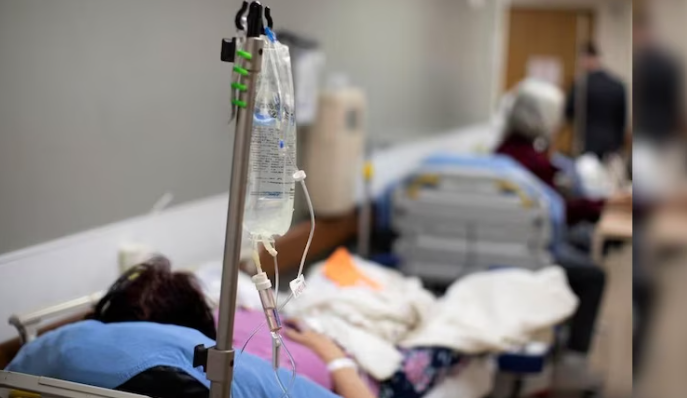Even while the COVID-19 winter wave is currently affecting the United States, some measurements appear to be leveling off COVID-19 Hospitalizations
The latest COVID: For more than two months, the number of hospital admissions in the United States has been rising. The Centers for Disease Control and Prevention reported over 35,800 hospital admissions related to COVID-19 last week.
After the winter holidays, when social gatherings and travel usually correlate with greater dissemination of COVID-19, the week-over-week growth has generally leveled off. However, hospital admissions in the US are at a level not seen since the winter of last year. Even while the COVID-19 winter wave is currently affecting the United States, some measurements appear to be leveling off. “Despite test positivity (percentage of tests conducted that were positive), emergency department visits, and hospitalizations remaining elevated nationally, the rates have stabilized, or in some instances, decreased, after multiple weeks of continual increase,” the CDC noted in a report on Friday.

COVID-19 Hospitalizations
According to wastewater surveillance data, the United States has “very high” COVID-19 virus levels, with the South having the highest levels recorded. The CDC’s tentative data show that COVID-19 is killing over 1,600 Americans every week. The low vaccination rate in the United States is probably contributing to the higher number.
COVID-19 Hospitalizations

COVID-19 Hospitalizations
JN.1, the predominant strain of COVID-19 circulating in the United States, is mostly responsible for the virus’s current dissemination. It is an omicron subvariant. Though the CDC notes that “at this time, there is no evidence that JN.1 presents an increased risk to public health relative to other currently circulating variants,” it is the variety that is spreading the fastest in the nation.
COVID-19 Hospitalizations

COVID-19 Hospitalizations
Frequently asked questions
How can I prevent COVID and influenza?
Make sure you cough or sneeze into your elbow or a tissue, discard the tissue, and wash your hands right away. Steer clear of individuals who are confirmed or suspected of having the flu, COVID-19, or RSV, especially in crowded indoor areas. You might want to think about donning a mask.
What is the treatment for Corona flu?
The majority of adults with mild cases of COVID-19 can treat their symptoms similarly to how they would treat a seasonal flu: stay home and rest, take ibuprofen or paracetamol for fever and pain relief, stay hydrated, and use cough medicine if necessary. One of the most prevalent COVID-19 symptoms is fatigue.
What are the symptoms of the flu (RSV) and COVID-19?
Fever, coughing, and shortness of breath are common symptoms of COVID-19, respiratory syncytial virus (RSV), and influenza (flu). It can be challenging to differentiate between respiratory virus-related illnesses due to their similar symptoms.
Can you have a cold and COVID at the same time?
Respiratory viruses can sometimes infect you in pairs, so COVID-19 can also accompany a cold or the flu. It is known as “coinfection,” but as far as current scientific understanding allows, it is an uncommon occurrence.
What antiviral is used for the flu?
There are four FDA-approved influenza antiviral drugs recommended by the CDC for use against recently circulating influenza viruses.
- Rapivab (peramivir)
- Relenza (zanamivir)
- Tamiflu (oseltamivir phosphate, also available as generic)
- Xofluza (baloxavir marboxil)
images source: Google
Disclaimer: The opinions and suggestions expressed in this article are solely those of the individual analysts. These are not the opinions of HNN. For more, please consult with your doctor




































